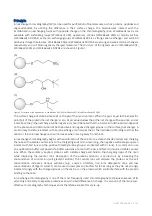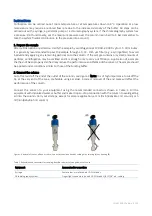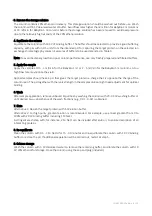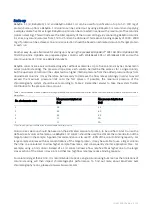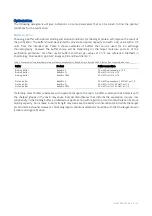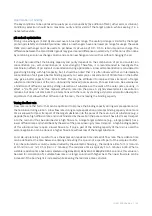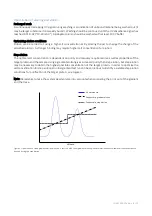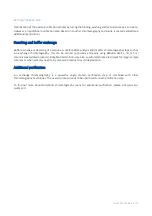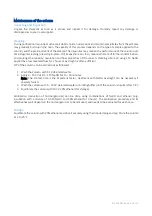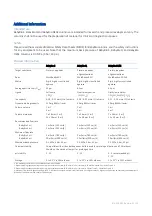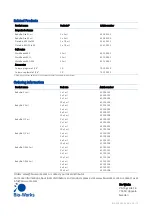
IN 45 100 010 • AA • 4 / 12
3. Remove the storage solution
The column contains 20% ethanol on delivery. This storage solution should be washed out before use. Wash
the column with 5 CV deionized water or buffer. Avoid flow rates higher than 2 ml/min for BabyBio 1 ml columns
or 10 ml/min for BabyBio 5 ml columns before the storage solution has been removed to avoid overpressure
due to the relatively high viscosity of the 20% ethanol solution.
4. Equilibrate the column
Equilibrate the column with 10 CV of binding buffer. The buffer should be selected to provide a good buffering
capacity, with p
K
a
within 0.5 units from the intended pH for capturing the target protein on the selected ion
exchange chromatography column. Examples of buffers to be used are listed in Table 3.
Note: To avoid bacterial growth and poor column performance, use only freshly prepared and filtered buffers.
5. Apply the sample
Apply the sample at 0.5 - 1 ml/min for the BabyBio 1 ml or 2 - 5 ml/min for the BabyBio 5 ml columns. A too
high flow rate may reduce the yield.
Applied samples should have a pH that gives the target protein a charge that is opposite the charge of the
column resin. The pH together with the ionic strength in the sample solution might need adjustment for optimal
binding.
6. Wash
After sample application, remove unbound impurities by washing the column with 20 - 30 CV washing buffer or
until desired A
280 nm
absorbance of the wash fractions (e.g., 0.01 - 0.02) is obtained.
7. Elute
Alternative 1:
Desorb the target protein with 5 CV elution buffer.
Alternative 2:
For high purity, gradient elution is recommended. For example, use a linear gradient from 0 to
100% with 20 CV binding buffer including 1 M NaCl.
A stringent wash step with, for instance, 2 M NaCl can be included after elution, to ensure desorption of all
interacting proteins.
8. Re-equilibrate
Clean the column with 0.5 - 1 M NaOH for 15 - 30 minutes and re-equilibrate the column with 10 CV binding
buffer to restore the pH. If additional separation will be carried out, restart at step 5.
9. Column storage
Wash the column with 5 CV deionized water to remove the remaining buffer. Equilibrate the column with 10
CV 20% ethanol for storage. Close the column using the cap and plug (included).


